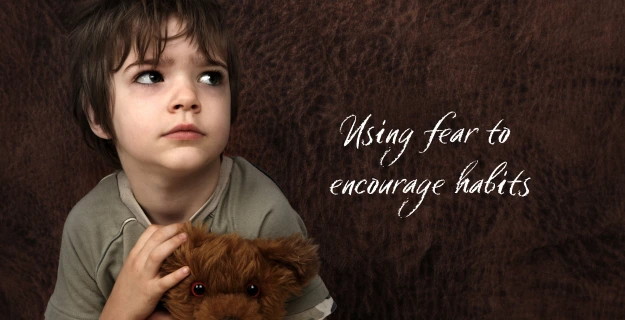A child’s world is full of fears. It could be made up, or real. Imagine entering into a world, where you are totally alone, struggling to walk, talk, think and see. A world where you begin to make sense of the people, places and situations around with limited tools. The fears are real!
The irony is, that adults fail to understand despite having gone through the same phase.
Children are constantly changing and developing, but at different pace and rate. Every child is a unique entity and hence it is difficult to predict the response and perceptions towards everyday situations. It varies significantly.
Along with other basic emotions, fear, too, is a natural, ingrained emotion. Technically, it is a tool to survive dangerous situations. Fear alerts the brain, body and soul.
Fear: Stages and Phases
Most childhood fears are normal, temporary, and eventually outgrown. At different stages and phases, fear is experienced differently.
The Newborns typically fear loud noises, sudden change in the pitch, tone or voice, unfamiliar faces and places. Further, they develop fear of strangers, fear of being left alone with unfamiliar people.
Preschoolers fear being separated by parents, worrying whether they would be left alone somewhere, fearing dark spaces, fearing trying new activities, large animals and strange environments.
With time, they fear not having friends and losing friends, school and studies related fears, of grades and of losing things they love. As they get older they fear life in general! Fear of uncertainties, fear of the unknown and fear of performance and fear of failures.
Hence, fear progresses, the way it is dealt progresses too.
With children it is vital to address these basic emotions with care and mindfulness. An outburst and over experience of any emotion may leave significant impact on their personalities rooting to many childhood related mental and physical health concerns.
Fear as a tool to discipline
Parents of today are experimentative and creative. They are on a constant ride to empower children. Using fear to discipline children is a traditional approach. The purpose could be to provide life lessons, to encourage ‘good habits’, to change an unwanted behavior, to convince and to encourage socially accepted behaviors. In the majority of parenting experiences, it has proven to be an effective tool, without conscious considerations of its impact on the way children experience and understand the world.
Habits by fear and force
Establishing routine and healthy habits with children is an age-old everyday hustle. But using fear to develop skills or imbibe new habits is a sensitive and probably a risky road. As it is hard to predict the impact it could leave on children. By inducing fear, a parent could accomplish the desired outcome, but the child could live with it forever giving rise to a further stream of fearful thoughts which does not reach a parent consciously. Children stay with it, dwell in it and branch it further leading to detrimental effects.
If you are struggling to inculcate habits in children, here are 5 things you could do rather than using fear to accomplish your goals!
1. Practice and then preach: If you want your child to inculcate a new habit, then the child has to observe that specific behavior by people around them. Parents and primary stakeholders have to demonstrate, and model expected behaviors. A child has to visibly see it around the house, in order to understand the system and its importance.
2. Talk about its impact: Educate children about the effect, outcome, end results they will experience if a specific behaviour is learnt. Talk to them about the cause and the effect. Talk about ‘what will happen if….?’
3. Wait, give time, hold on: Practice patience with children. Give them their time and space to learn new behaviors. Their thinking, acting and following speed differ and they are a constant work in progress. Alter expectations, be realistic and set achievable goals.
4. Be consistent: Ensure, you talk the same thing, act the same way and believe in the same thing. Parenting is knowing and working on yourself rather than envisioning an ideal child. Be consistent with your routine, behaviors, value systems and things you expect children to do. A deviation in your stream of thoughts affects the way the child sees you. It won’t be hard, if you do what you believe in.
5. Use plain simple words: Avoid using bold statements, harsh comments, targeting the child or comparing with other children. Avoid using statements that talk about negative repercussions. For example, ‘if you don’t do this, I will do this!’ Avoid talking about leaving children alone, or in dark spaces or conveying that they will be left alone, hit hard or be devoid of love, acceptance or attachment.
The psychology of fear is mental as well as physical. Other than the child himself, the brain is also witnessing the parenting styles and grasps all nasty things first!
Our job as parents is to make things easy for children and not complicate it.



